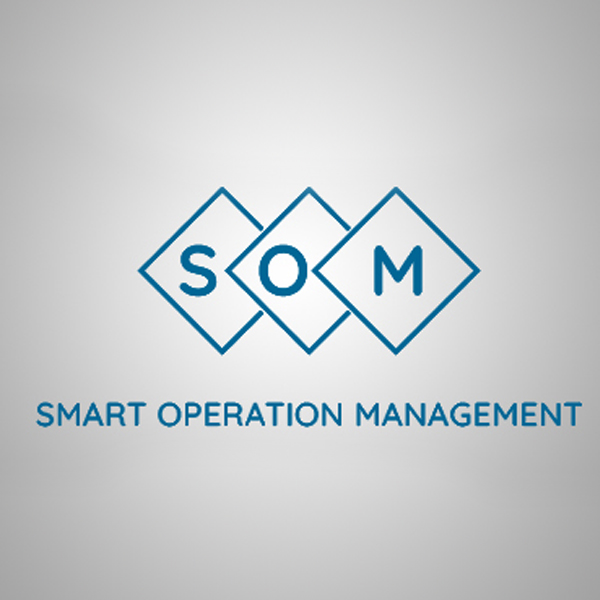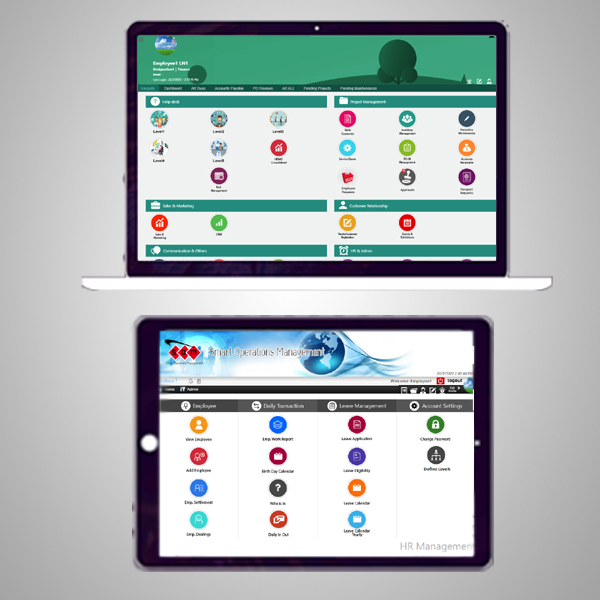Smart Operations Management
As a leading technology expert in the industry, SAIT offerS, exceptional enterprise application development services for all internal & external procedures of an organization, that integrate well with other critical applications existing within them, to improve business insight.
Our “Enterprise Operation Planning” software titled, Smart Operations Management.


Features
- Integration
- Automation
- Data analysis
- Reporting
- Accounting
- Financial management
- Customer relationship management (CRM)
- Sales and marketing
- Human resources (HR)
- Supply chain management (SCM)
- Business process controls
Data silos lead to inefficiency, missed opportunities and departments working at cross-purposes. The primary, and maybe most significant, benefit of SOM is a central view of essential financial, operational and business data that can be shared across the organization in near-real-time.
SOM provide the means to develop business intelligence by turning that data into reports and insights that a company can use to re-allocate resources or capitalize on new market opportunities, among other actions.
SOM provides the ability to automate repeatable business tasks, such as payroll, HR and Admin Activities, order processing, invoicing, reporting and more. Automation minimizes the time spent on manual data entry, reduces errors and lets employees focus on more value-added tasks.
The data entered by one user is available across the organization. So, for example, an inventory tracking module could automatically trigger a shipment and invoice when a certain SKU (Stock Keeping Unit) becomes available. That translates into more revenue and a better customer experience. Or, line-of-business executives could automatically receive up-to-date reports on cash flow and other metrics to inform decisions.
SOM is capable of analysing the data using power BI Data Visualization application. The power of data analysis is enabling employees to gather a wide variety of information and spin it into actionable insights—on new business opportunities as well as ways to optimize current operations, reduce costs, spot fraud and better serve customers.
Better reporting is almost as important to executives as more effective data usage. SOM reporting modules compile information about business operations into reports that empower stakeholders to make more informed decisions, enhance business processes and identify problem areas before the business suffers. Reports may include visual representations, such as charts, graphs and dashboards, (powered by Power Bi) hopefully revealing trends and patterns to improve business results.
SOM Accounting Module deliver the ability to track, store and analyze financial data, such as accounts payable (AP), accounts receivable (AR), general ledger (GL), budgets and forecasting. Systems may perform more advanced tasks such as tax management, fixed assets management, revenue recognition and multi-currency reconciliation.
Time is money, and month-end closes always take longer than CFOs would like. This functionality decreases the time it takes to reconcile and close out monthly financial statements. It’s critical for companies looking to move to continuous month-end closes.
Financial management is a complex task that involves planning, organizing and determining the best use of funds for a business. Financial leaders must track and use financial data from all departments to make decisions about, for example, capital projects, funding sources, cash management and financial controls.
SOM assist finance teams with the management process by tracking, analyzing and reporting critical business data. In large, complex organizations, a software like SOM is an inevitable tool for sound financial management.
SOM with integrated CRM features bring customer relationship data into the mix, expanding the view of the business. All customer information—including contacts, order history, purchase orders and prospect status—is in a shared, easily accessible database.
CRM systems enable companies to automate processes like filling out POs, generating accounts receivable reminders and sending notifications for an account executive to follow-up when a prospect reaches a pre-defined point in a sales pipeline.
SOM with integrated CRM also benefit marketing and sales teams by making it easier for them to sell, upsell, generate quotes and purchase orders, forecast, manage commissions and track key details like profit margins and ratios.
Marketing teams may benefit from an ability to drive more leads, quickly build and execute campaigns and track customer activity through the sales cycle.
Sales and marketing teams use SOM functions in close connection with finance and operations colleagues to provide a superior customer experience through the entire sales pipeline.
The HR Module of SOM acts as an end-to-end employee management platform, handling payroll, hiring, onboarding, compensation management and timekeeping, Issuance Certificates and Warning Letters, Employee Leave Management. Complex HR functions, Payroll Processing, and benefits deductions, are automated with SOM software, which saves time and money while reducing errors.
SOM SCM Module offer insight into a company’s supply chain management (SCM) efficiency by tracking demand, inventory, manufacturing processes, logistics and distribution. A fully automated and integrated supply chain enhances operations by suggesting purchase orders, work orders and transfer orders across multiple locations.
SOM SCM systems can also help set inventory goals and simplify distribution resource planning. Real-time data on a company’s supply chain helps identify areas of inefficiency, providing greater control and management over inventory and accounts payable. SOM SCM systems are also capable to issue purchase orders in multiple currencies and accounts payables can be managed in multiple currencies.
SOM will help your business to manage its processes and stay in control of any situation. These controls can be simple, such as an alert when a customer order is due for shipment today but not yet recorded. The controls can be quite complex too. For example, each measurement in the quality processes can trigger an immediate alert that it is beyond the statistical limits and help choose whether secondary measurements are required or if this item should be reworked.






